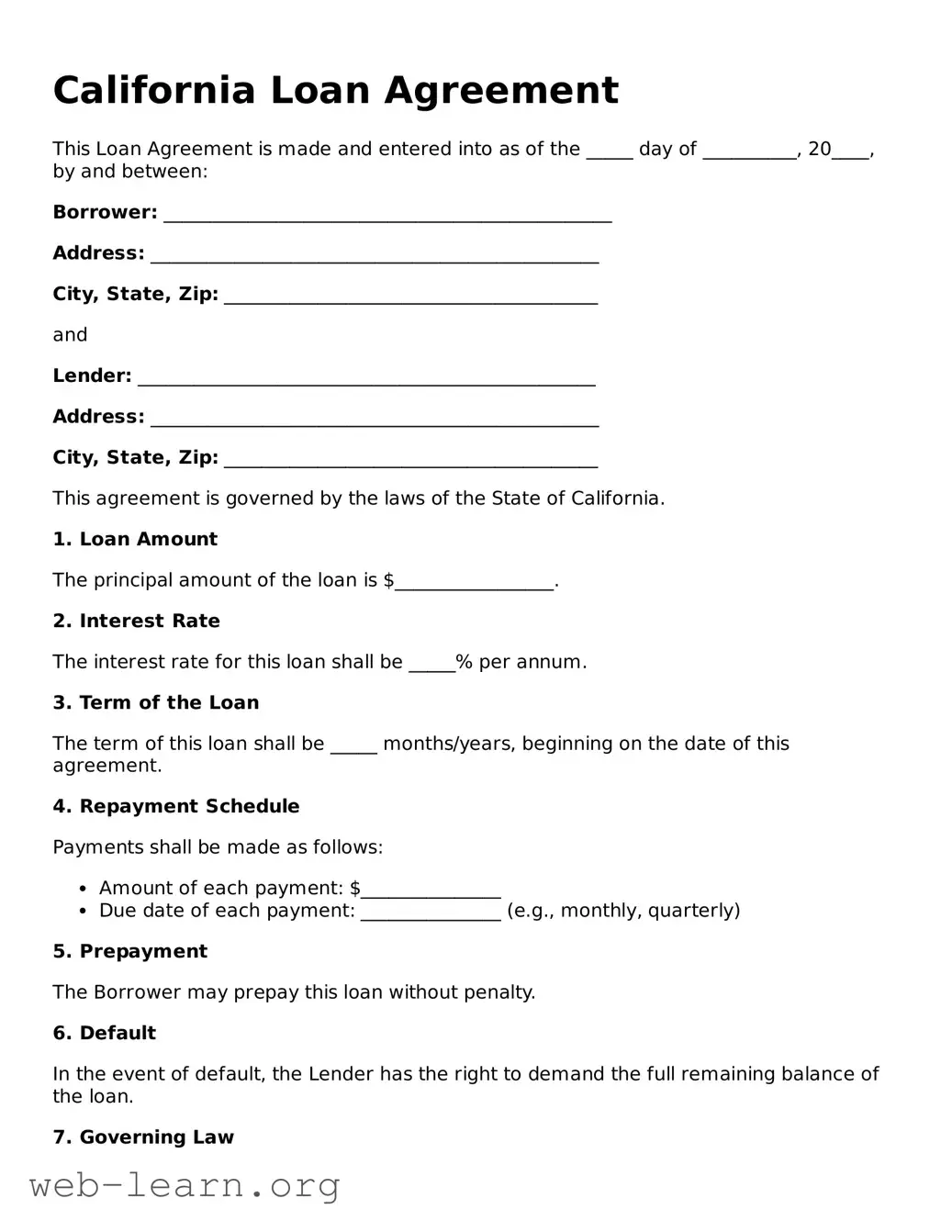California Loan Agreement
This Loan Agreement is made and entered into as of the _____ day of __________, 20____, by and between:
Borrower: ________________________________________________
Address: ________________________________________________
City, State, Zip: ________________________________________
and
Lender: _________________________________________________
Address: ________________________________________________
City, State, Zip: ________________________________________
This agreement is governed by the laws of the State of California.
1. Loan Amount
The principal amount of the loan is $_________________.
2. Interest Rate
The interest rate for this loan shall be _____% per annum.
3. Term of the Loan
The term of this loan shall be _____ months/years, beginning on the date of this agreement.
4. Repayment Schedule
Payments shall be made as follows:
- Amount of each payment: $_______________
- Due date of each payment: _______________ (e.g., monthly, quarterly)
5. Prepayment
The Borrower may prepay this loan without penalty.
6. Default
In the event of default, the Lender has the right to demand the full remaining balance of the loan.
7. Governing Law
This agreement shall be governed by and construed in accordance with the laws of the State of California.
8. Signatures
By signing below, both parties agree to all terms outlined in this Loan Agreement.
Borrower Signature: ___________________________ Date: _______________
Lender Signature: _____________________________ Date: _______________
